Q
Which is better, Mazda 3 Saloon or Hatchback?
The sedan and hatchback versions of the Mazda3 each have their own advantages, making it difficult to directly determine which is superior. In terms of exterior design, the sedan features smooth and elegant lines, with harmonious proportions that exude a sense of stability and sophistication. The hatchback, on the other hand, is sportier and more stylish, with a unique rear design that enhances its overall dynamic presence.
When it comes to practical space, the hatchback clearly has the upper hand. Its larger trunk opening makes it more convenient to load bulky items, such as strollers or sports equipment, and the rear seats can be folded down to create a nearly flat cargo area. The sedan offers a more neatly organized trunk space, which is still adequate for everyday use.
As for performance and handling, both versions are largely equivalent, providing excellent power responsiveness and solid chassis tuning. Therefore, if you prioritize elegant and understated aesthetics along with a well-organized trunk, the sedan is a great choice. However, if you're after a fashionable and dynamic look with greater flexibility in cargo space, then the hatchback would be more suitable for you.
Special Disclaimer: This content is published by users and does not represent the views or position of PCauto.
Related Q&A
Q
What Segment is Mazda 3 Hatchback?
The Mazda 3 Hatchback falls into the C-Segment (also known as compact cars segment) in the Malaysian market, sharing the same class as models like the Honda Civic and Toyota Corolla. This five - door hatchback is popular among young consumers for its dynamic design, refined interior, and excellent handling performance. The Skyactiv - technology engine it's equipped with strikes a balance between fuel efficiency and power output, making it suitable for both city driving and long - distance trips.
In Malaysia, C - Segment models are well - received for their combination of practicality and driving pleasure. The Mazda 3 Hatchback further enhances its competitiveness by offering a wide range of features such as a head - up display and a Bose audio system.
It's worth noting that when Malaysian consumers are making a purchase, they can compare the after - sales warranty policies and spare - parts availability of competing models in the same segment. At the same time, they should also consider their own needs regarding body size and trunk space. Although the hatchback design is stylish, its cargo - carrying capacity is slightly inferior to that of the sedan version. If you often need to carry a large amount of cargo, you may need to weigh the pros and cons.
Q
What is the Reslae Value of Mazda 3 Hatchback?
The Mazda 3 Hatchback has shown stable resale value in the Malaysian used - car market. This is mainly due to its outstanding design, reliable powertrain, and the brand's good reputation. Generally, a three - year - old used Mazda 3 Hatchback can retain 60% to 70% of its original price, depending on the vehicle's age, mileage, and maintenance condition. If the car has been well - maintained and has low mileage, its residual value could be even higher.
Mazda's Skyactiv technology has improved fuel efficiency and the driving experience, further enhancing its market competitiveness. Regular maintenance at authorized service centers and keeping complete records can also significantly increase the used - car value. Moreover, Malaysian consumers prefer Japanese cars for their high durability and low maintenance costs, which makes the Mazda 3 Hatchback quite popular in the used - car market.
For potential buyers, it is recommended to check the vehicle's accident history and repair records. At the same time, compare it with competing models of the same year, such as the Honda Civic or the Toyota Corolla Hatchback, to make a more comprehensive decision.
Q
How Many CC is Mazda 3 Hatchback?
The Mazda 3 Hatchback offers engine options in the Malaysian market, mainly including the 1.5-liter and 2.0-liter Skyactiv-G gasoline engines with displacements of 1496cc and 1998cc respectively. Both of these engines adopt Mazda's advanced Skyactiv technology, which focuses on balancing fuel efficiency and power output. The 1.5-liter version is suitable for daily commuting, while the 2.0-liter version can provide stronger power performance.
For Malaysian consumers, it's important to choose the right engine displacement according to their needs. Displacement not only affects power performance but also road tax and fuel economy. In Malaysia, road tax is calculated based on engine displacement; the larger the displacement, the higher the road tax. Thanks to the optimization of Skyactiv technology, these two engines can achieve good power output while also taking fuel economy into account.
The Mazda 3 Hatchback is very popular among young consumers for its excellent handling and Kodo design language. It's a popular hatchback model in the Malaysian market that combines sportiness and practicality, and it can handle both city driving and occasional long - distance trips.
Q
What is the Engine in Mazda 3 Hatchback?
The Mazda 3 Hatchback mainly offers two high - performance Skyactiv - G gasoline engine options in the Malaysian market, namely the 1.5 - liter and 2.0 - liter four - cylinder naturally aspirated engines. The 1.5 - liter version has a maximum output power of 114 horsepower, which is suitable for daily commuting and has excellent fuel economy. The 2.0 - liter version provides 156 horsepower, with more abundant power. It is also equipped with Mazda's unique Skyactiv - Vehicle Dynamics vehicle dynamic management system, offering more precise handling performance.
Both of these two engines adopt a high - compression ratio design (13:1). Combined with direct - injection technology and a 4 - 2 - 1 exhaust system, they effectively improve combustion efficiency and reduce fuel consumption, while meeting the Euro 5 emission standards in Malaysia. It's worth noting that Mazda's Skyactiv technology optimizes internal engine friction and uses lightweight design. While maintaining the linear power output of the naturally aspirated engine, it also takes environmental protection performance into account, making it suitable for Malaysia's diverse road conditions.
If you have higher performance requirements, you can pay attention to the Skyactiv - X compression - ignition engine version available in overseas markets. Its thermal efficiency is further improved through the SPCCI spark - controlled compression ignition technology. However, this version has not been introduced to Malaysia yet. It is recommended that car owners regularly use the 0W - 20 low - viscosity engine oil recommended by the original factory and 95 - octane or higher gasoline to fully unleash the engine's performance.
Q
What is the Gearbox Type of Mazda 3 Hatchback?
The Mazda 3 Hatchback offers two main types of transmissions in the Malaysian market, namely the 6-speed automatic manual integrated transmission (Skyactiv-Drive) and the 6-speed manual transmission. The specific configuration depends on the model version and the year. Among them, the Skyactiv-Drive automatic transmission is well - known for its smooth shifting experience and fuel economy. It adopts Mazda's exclusive Skyactiv technology, which enhances the driving experience by optimizing transmission efficiency and reducing power loss. The manual transmission version is more suitable for drivers who pursue the joy of control, providing more direct shifting feedback. It's worth mentioning that Mazda's Skyactiv technology not only focuses on performance but also takes environmental protection needs into account, which meets the preference of the Malaysian market for energy - efficient models. If you have further questions about the transmission configuration of specific models, it is recommended to check the official website of Mazda Malaysia or consult local dealers to get the latest information. At the same time, you can also take a test drive to experience the actual performance of different transmissions so as to choose the version that best suits your driving habits.
Q
What is the PCD Size of Mazda 3 Hatchback?
The PCD (Pitch Circle Diameter) of the Mazda 3 Hatchback is 5x114.3. This means there are 5 bolt holes on the wheel hub, and the centers of these holes are distributed on a circle with a diameter of 114.3 millimeters. This specification is quite common in the Malaysian market and is shared by many Japanese - made models such as the Honda Civic and Toyota Corolla, which makes it convenient for car owners to replace or upgrade their wheels. Understanding the PCD size is crucial when replacing wheels or installing new tires, as an incorrect PCD will prevent the wheels from being installed properly, which can affect driving safety.
Apart from the PCD, when choosing wheels, car owners also need to pay attention to the center bore diameter (CB) and the offset value (ET) to ensure a perfect match with the vehicle. In Malaysia, many wheel modification shops are familiar with these parameters. It's recommended that car owners consult professionals or refer to the vehicle manual before modification to ensure compatibility.
The Mazda 3 Hatchback is well - known for its handling and design. A reasonable wheel upgrade can further enhance its appearance and performance. However, it's essential to choose high - quality products that meet the specifications to ensure safety.
Q
Does Mazda 3 Hatchback Have Apple Carplay?
Yes, the Mazda 3 Hatchback in the Malaysian market is indeed equipped with Apple CarPlay. This feature has become standard in recent models, allowing iPhone users to seamlessly connect their phones to the car's display and use apps like navigation, music, and calls. The entertainment system of the Mazda 3 Hatchback also supports Android Auto, meeting the needs of users with different types of phones. Its user interface is clean and smooth, integrating well with the Mazda Connect system, which enhances both convenience and safety while driving. In addition to Apple CarPlay, the vehicle also comes with several practical technologies, such as a Head-Up Display (HUD) and a Bose sound system, further enhancing the driving experience. For Malaysian consumers, the Mazda 3 Hatchback is not only known for its stylish design and handling performance, but its rich technological features also make it a popular choice among cars in the same class. If you value smart connectivity features, this car is worth considering.
Q
What is the Tyre Brand of Mazda 3 Hatchback?
The original - equipped tire brands of the Mazda 3 Hatchback in the Malaysian market may vary depending on the model year and configuration. Common combinations include international brands such as Bridgestone, Dunlop, or Toyo. Specific models, like the Bridgestone Turanza T005A or Dunlop Enasave EC300+, focus on quiet comfort and wet - surface performance, meeting the needs of the local rainy climate. Car owners can confirm the original specifications through the sidewall markings of the tires or the vehicle manual. It is recommended to choose tires that match the original size (e.g., 215/45 R18) and load index to ensure safety.
If replacement is needed, similar products such as the Michelin Primacy 4 or Goodyear EfficientGrip can be considered. They also emphasize low rolling resistance and durability. However, it should be noted that the dry and wet - surface performance and wear - resistance index of tires from different brands may affect the driving experience.
In Malaysia, where it is hot and rainy, regularly checking the tire pressure and tread depth (it is recommended to be no less than 1.6 millimeters) can extend the tire life and improve fuel economy. Pay more attention to the drainage performance before the rainy season to prevent skidding.
Q
Is Mazda 3 Hatchback a Good Car? Learn the Pros and Cons Here
The Mazda 3 Hatchback is a compact hatchback that's quite popular in the Malaysian market. Its advantages include a stylish and dynamic exterior design, delicate interior craftsmanship, and excellent handling performance. The Skyactiv - technology engine it's equipped with strikes a good balance between fuel economy and power output. Meanwhile, the standard i - Activsense safety system offers leading active and passive safety features in its class.
However, the rear - seat space is relatively cramped, and the maintenance and repair costs are slightly higher than some Japanese competitors. The sporty suspension tuning might not meet the comfort needs of some consumers. For Malaysian consumers, this car is especially suitable for young people who pursue driving pleasure. Its Kodo design language also enjoys high popularity in the local car modification circle.
It's worth noting that in tropical climates, it's advisable to choose ventilated seats and regularly check the air - conditioning system. At the same time, the 5 - year warranty policy provided by the manufacturer can effectively reduce the cost of car ownership. Among models in the same class, you can also refer to the Toyota Corolla Hatchback or the Honda Civic Hatchback for a horizontal comparison. It's recommended to take a test drive and then make a choice according to your personal needs.
Q
What is the Width of Mazda 3 Hatchback?
According to official data, the body width of the Mazda 3 Hatchback is 1,795 millimeters. This dimension puts it in the upper - middle range among compact hatchbacks in the Malaysian market. It offers both a comfortable seating space and great maneuverability for city driving. For Malaysian consumers, this width ensures that they don't feel cramped when driving on narrow streets or in parking lots, while also guaranteeing sufficient lateral space for passengers inside the car.
The Mazda 3 Hatchback features the brand's unique Kodo design language. The smooth body lines not only enhance the car's visual dynamism but also optimize its aerodynamic performance. In Malaysia's tropical climate, the car's air - conditioning system can effectively cool the entire cabin, ensuring a comfortable driving and riding experience.
Notably, the handling performance of the Mazda 3 Hatchback has also received wide acclaim. Its precise steering and stable cornering performance are well - suited to Malaysia's winding roads. Additionally, this car is equipped with a wealth of safety features, such as blind - spot monitoring and lane - keeping assist systems, which provide extra protective support for Malaysian drivers.
Latest Q&A
Q
What Segment is BYD Dolphin?
The BYD Dolphin belongs to the B-Segment category. This segment usually covers small cars. The Dolphin measures 4,290mm in length, 1,770mm in width, and 1,570mm in height, with a wheelbase of 2,700mm. Its overall dimensions meet the characteristics of the B-Segment. Small cars like this have obvious advantages in city commuting. Their compact and flexible bodies make it easy to maneuver through narrow streets and park in crowded parking spaces. Moreover, a smaller body also means relatively lower energy consumption. As a pure electric vehicle, the Dolphin offers a great option for consumers in the B-Segment, thanks to its stylish exterior, comfortable interior, and rich configurations. It's suitable for those who pursue practical and convenient transportation. Whether it's for daily work, shopping, or picking up kids, the Dolphin can handle it with ease.
Q
What is the Reslae Value of BYD Dolphin?
As a pure electric vehicle, the second-hand resale value of the BYD Dolphin in the Malaysian market will be influenced by factors such as brand recognition, battery life, local policy support, and the popularity of electric vehicles. Currently, electric vehicles in Malaysia are still in the development stage, and the acceptance of them in the second-hand market may be slightly lower than that of traditional fuel-powered vehicles. However, with BYD's global brand influence and mature battery technology, the Dolphin is expected to have better resale performance than some niche electric vehicles. It is recommended that owners regularly maintain the battery system and keep complete maintenance records, which can significantly increase the resale value. The Malaysian government has gradually introduced incentives such as tax exemptions for electric vehicles in recent years, which will help boost the demand for electric vehicles in the second-hand market in the long run. Among vehicles in the same class, electric vehicles usually have lower maintenance costs than fuel-powered vehicles, which is also a factor that potential buyers will consider. If you plan to change your car in the next few years, you can choose BYD's official buy-back program (if available), which often better protects the residual value than private transactions.
Q
What is the Lamborghini Urus Tyre Size? Check Standard Here!
The standard tire size of the Lamborghini Urus is 285/45 R21 for the front wheels and 315/40 R21 for the rear wheels. This configuration is specially designed for the high - performance SUV positioning of the Urus, taking into account both road handling and mild off - road needs. The wide tire tread and low aspect ratio of the tires can provide better grip and steering response, which is suitable for the winding roads in Malaysia and the occasional wet roads during rainy days.
If you choose to install larger wheels (such as 22 - inch or 23 - inch ones), the tire size will be adjusted accordingly. For example, a 22 - inch wheel is paired with 285/35 R22 for the front and 325/30 R22 for the rear, further enhancing the visual appeal and sporty performance.
It's worth noting that high - performance tire models (such as Pirelli P Zero or similar products) should be used for the Urus to ensure they match its 640 - horsepower power output. Owners in Malaysia should regularly check the tire pressure and wear. Especially in the hot climate, high temperatures may accelerate tire aging. At the same time, it is recommended to replace the tires through the authorized Lamborghini service center to maintain the original factory tuning characteristics. If you often drive on rough roads, you can consider all - terrain tires, but you need to weigh the comfort and noise performance.
Q
What is Lamborghini Urus? Here's the Full Review for You!
The Lamborghini Urus is a high-performance luxury SUV that combines the power of a supercar with the practicality of an SUV. It's specifically designed for owners who pursue the ultimate driving experience. It is equipped with a 4.0-liter V8 twin-turbocharged engine, with a maximum output power of 650 horsepower. It can accelerate from 0 to 100 km/h in just 3.6 seconds, making it one of the fastest SUVs on the market at present.
The Urus not only features Lamborghini's iconic and aggressive exterior design, but also comes with an advanced four-wheel drive system, adaptive air suspension, and a variety of driving modes. It can easily handle both city roads and rough terrains. For Malaysian consumers, the Urus's spacious interior and luxurious configuration make it very suitable for family use, and its excellent performance can also meet the needs of speed enthusiasts.
Moreover, the launch of the Urus marks Lamborghini's successful entry into the SUV market, further enriching its product line and attracting more new customers to the brand. This car has attracted a lot of attention in the Malaysian market and is especially suitable for high-end buyers who want both the performance of a supercar and the practicality of an SUV.
Q
How to Caculate Lamborghini Urus Loan? Grasp the Idea Here!
To calculate the loan for the Lamborghini Urus, you first need to understand the basic process and key factors of car loans in Malaysia. Typically, these include the vehicle price, down - payment ratio, loan term, interest rate, and the loan policies of banks or financial institutions. Take the Urus for example. Suppose the car price is 1 million Malaysian ringgit, the down - payment ratio is 20% (that is, 200,000 ringgit), the loan amount is 800,000 ringgit, the loan term is 5 years (60 months), and the annual interest rate is about 3.5%. Then, you can use a loan calculator to figure out the monthly repayment amount, which is approximately 14,500 ringgit. The specific figure may fluctuate according to the actual interest rate and terms of the bank.
Car loan interest rates in Malaysia usually depend on an individual's credit score, loan term, and market conditions. It is advisable to consult and compare the offers of multiple banks or financial institutions before buying a car to select the most suitable loan plan. In addition, you also need to consider insurance, road tax, and other additional fees, as these will all affect the total expenditure. For luxury cars like the Urus, some banks may require a higher down - payment or stricter loan conditions. Therefore, it is very important to make financial plans in advance. Understanding these details can not only help you plan your budget more clearly but also avoid excessive repayment pressure later.
View MoreRelated News

Seeing the Ferrari Purosangue reminds one of the Mazda 3 Hatchback
Kevin WongDec 2, 2024
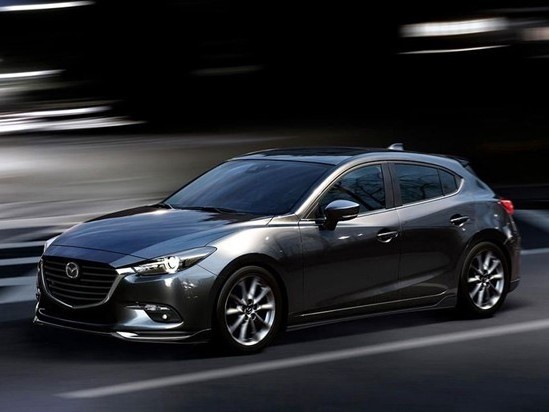
2023 Mazda 3 Hatchback: Six colors, two configurations, is it worth RM160,000?
JohnOct 17, 2024
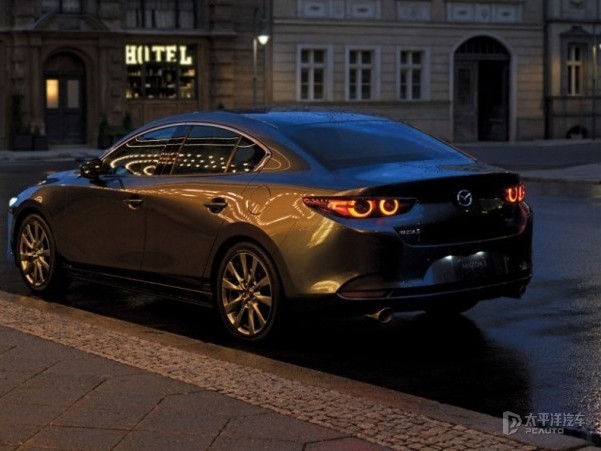
Mazda 3 Hatchback, priced from RM166,059, how to choose between the two models?
AshleyJul 15, 2024
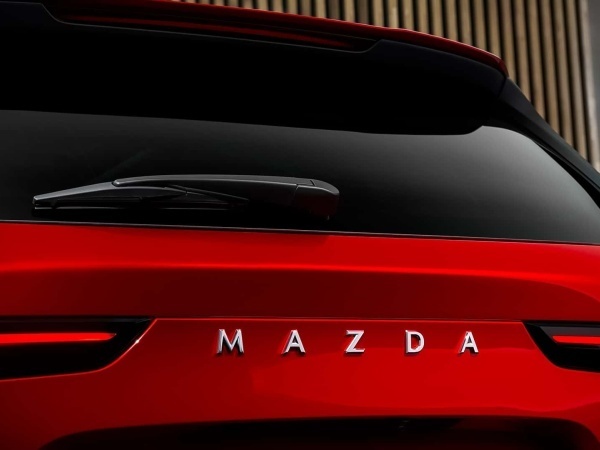
The third-generation Mazda CX-5 debuts in Europe, equipped with the largest central control screen in Mazda's history
MichaelJul 11, 2025
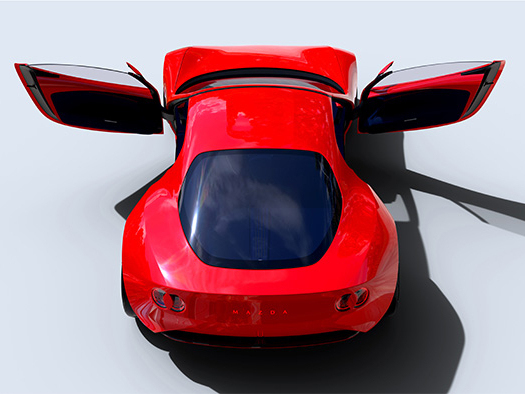
Rotary Reborn: Iconic SP Heads for Production
WilliamJun 26, 2025
View More

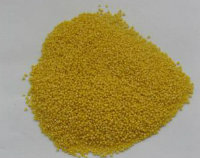










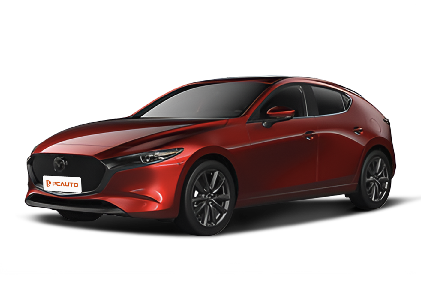





Pros
Cons